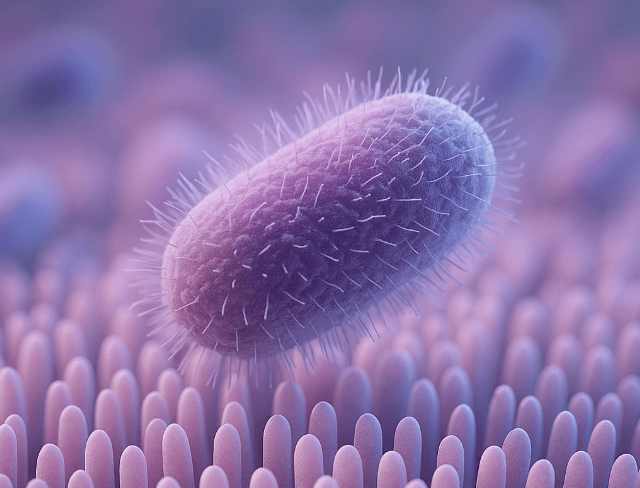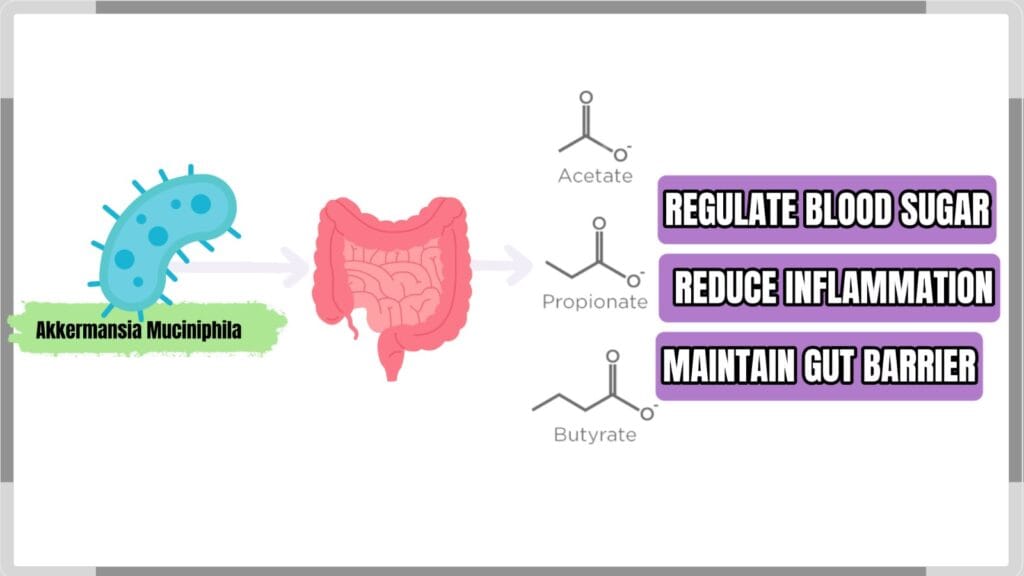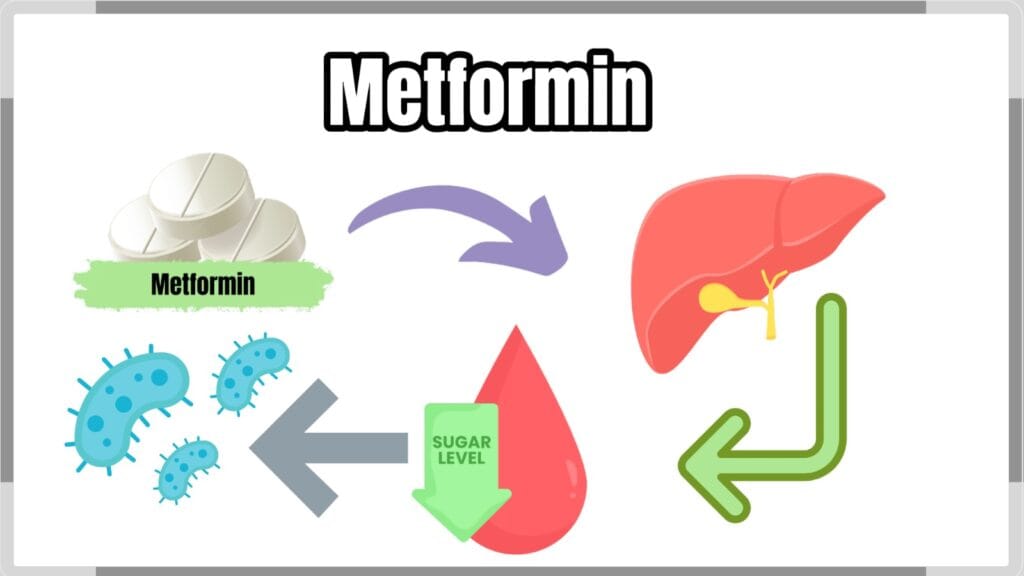
Every five seconds, someone in the world is diagnosed with diabetes — and over 90% of those cases are type 2. It’s one of the most common chronic diseases today… but what if the solution isn’t just in your blood sugar, your pancreas, or your diet — but in your gut?
Enter Akkermansia muciniphila — a microscopic bacteria living deep in your intestines that scientists believe could change the game in how we approach metabolic health, weight loss, and inflammation. Let’s break down what it is, why it matters, and how you can naturally boost it to support better glucose control and overall wellness.
Table of Contents
What is Akkermansia muciniphila?
This gut-dwelling microbe lives in the mucus layer of your intestines. Discovered in 2004, it now plays a leading role in microbiome research thanks to its surprising health benefits. Even though it makes up only 1 to 5% of your total gut bacteria, its impact is significant.
What does Akkermansia do in the gut?
Think of it like a microscopic janitor — constantly cleaning your gut lining by feeding on the mucus your body naturally produces. While that might sound unappealing, this process stimulates your body to produce fresh mucus, reinforcing your intestinal barrier and keeping harmful substances out of your bloodstream.
What happens if you have low levels?
Low levels of this microbe have been repeatedly linked to serious health conditions — especially obesity, insulin resistance, and type 2 diabetes. In study after study, researchers have found that people with metabolic disorders tend to have less these beneficial bacteria in their gut compared to healthy individuals.
But why does that matter so much? It turns out, this microbe isn’t just a passive resident of your gut — it’s an active player in your body’s health.
Study on Akkermansia and glucose metabolism
Is more always better?
Before we put this tiny microbe on a pedestal, let’s add some nuance. Yes, low levels have been linked to diabetes and obesity. But higher levels have also been observed in people with:
- Irritable bowel syndrome (IBS)
- Parkinson’s disease
- Multiple sclerosis (MS)
So more isn’t always better. The gut is an ecosystem. Trying to micromanage it with one “magic bacteria” can backfire. Gut diversity and balance matter more than any single microbe.
What does Akkermansia do for the body?
In addition to gut lining maintenance, this bacteria contributes to metabolic health in two big ways:
1. It Produces Short-Chain Fatty Acids (SCFAs)
It helps produce SCFAs like butyrate, acetate, and propionate — all of which help regulate blood sugar, reduce inflammation, and maintain a healthy gut barrier.
SCFAs are fuel for the cells in your gut lining, and they help keep inflammation in check. Without enough Akkermansia, you miss out on these vital compounds — and that can lead to blood sugar issues, weight gain, and gut inflammation.
2. It Increases GLP-1 — The Fullness Hormone
It also stimulates a hormone called GLP-1 (glucagon-like peptide-1). This hormone:
- Slows how fast food leaves your stomach (so you feel full longer)
- Sends “I’m full” signals to your brain
- Helps lower blood sugar by supporting insulin release
You may know GLP-1 from medications like Ozempic and Mounjaro. This bacteria can help increase GLP-1 naturally, offering similar benefits without drugs.

What causes low abundance of this bacteria?
When someone has type 2 diabetes or obesity, they often have less of this species, and the gut lining becomes weaker and leakier. This allows inflammatory molecules like lipopolysaccharides (LPS) to enter the bloodstream — which increases insulin resistance and worsens blood sugar levels.
Less Akkermansia → More Inflammation → Worse Blood Sugar → More Fat Gain → Even Less Akkermansia.
It becomes a downward spiral. But the good news? You can flip that script.
How to Get Akkermansia Naturally
You don’t need expensive pills or prescriptions, here’s how to create a gut environment that supports this important bacterium:
1. What foods contain polyphenols that help Akkermansia?
Polyphenols don’t feed Akkermansia directly, but they help create a gut environment where it thrives. Foods rich in polyphenols include:
- Berries (especially cranberries and blueberries)
- Concord grapes
- Green tea
- Peppermint and cloves
- Dark chocolate

2. Does fasting increase it?
Yes! Since this species feeds on mucus, not food particles, it keeps working even when you fast. Intermittent fasting and moderate calorie restriction can boost its levels.
3. Can exercise help increasing this bacteria?
Absolutely. Regular movement increases overall microbiome diversity, and that includes this mucus-loving microbe. Even simple activities like walking or yoga can help.
4. Can stress lower its levels?
Yes. Stress harms your gut barrier and can suppress beneficial bacteria. Sleep, nature time, and mindfulness practices can all make a difference.
5. What foods feed this microbe?
Prebiotics are fibers that feed your good bacteria and encourage mucus production:
- Onions
- Garlic
- Leeks
- Green bananas
- Cooked and cooled sweet potatoes
- Artichokes
Is it worth taking Akkermansia as a probiotic?
There is a supplement version, but only one company holds the patent. It can be expensive and isn’t always necessary.
Instead, many people start with these well-researched probiotic strains:
- Lactobacillus
- Bifidobacterium
- Saccharomyces boulardii
- Soil-based probiotics
Together, these can create a healthier gut environment that naturally supports Akkermansia growth.
Caution: If you have IBS or SIBO, adding too many probiotics too quickly can worsen symptoms. Start low, go slow.
What supplements increase Akkermansia?
Besides taking Akkermansia directly (if available), other supplements may indirectly support its growth, such as:
- Polyphenol-rich extracts (cranberry, grape seed, green tea)
- Prebiotic fibers (inulin, FOS, partially hydrolyzed guar gum)
- Butyrate supplements (SCFA support)
- Probiotic blends that enhance mucus production
As always, consult your practitioner before introducing new supplements.
What’s the link between Metformin and this bacteria?
Metformin — one of the most prescribed diabetes drugs in the world — doesn’t just lower blood sugar through the liver. It also increases Akkermansia levels.
As Akkermansia increases, so do SCFAs like butyrate — which helps reduce inflammation, improve blood sugar, and support metabolic health.
So part of Metformin’s success may actually be microbial.

How Metformin Affects Gut Bacteria
Is This the Key to Reversing Diabetes?
Managing blood sugar isn’t just about insulin. It’s about restoring balance to your gut, lowering inflammation, and nurturing a healthy microbiome.
By supporting this often-overlooked bacterium — and your gut ecosystem as a whole — you take a powerful step toward reclaiming your metabolic health.
No, it’s not an overnight cure. But your gut could be your most underrated ally.
Also read: 5 Warning Signs of IBS You Shouldn’t ignore
